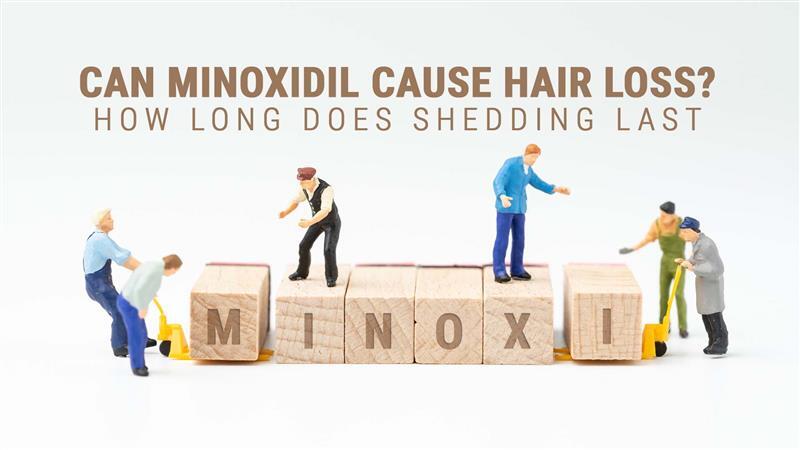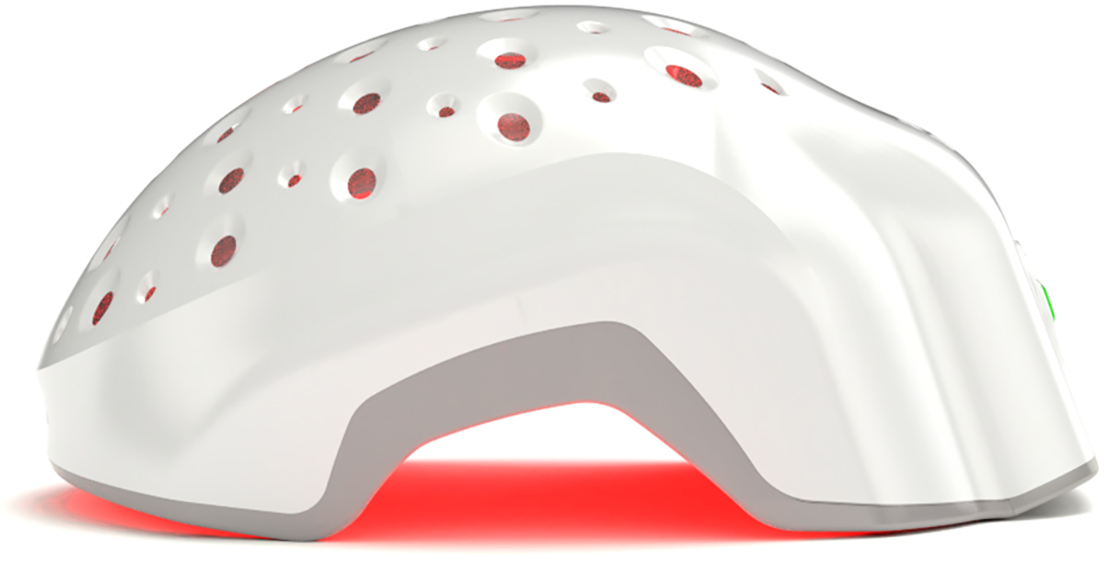Losing hair while trying to regrow hair feels like the ultimate betrayal. One minute, you're applying minoxidil with high hopes of reversing hair thinning, and the next, you're watching more strands abandon ship than ever before. If you’ve found yourself asking, “Can minoxidil cause hair loss?”, you’re not overreacting—this is a real thing, and yes, it’s annoying.
But here’s the catch: this isn’t the kind of hair loss that leaves you permanently bald. Minoxidil-induced shedding is actually a sign that the treatment is working, not failing. The reason is… Minoxidil speeds up your hair’s natural cycle, forcing out older, weaker hairs to make way for stronger, healthier growth. It’s like firing the slackers to bring in a fresh, hard-working team—except in this case, the transition phase looks (and feels) a little rough.
Now, before you panic and swear off minoxidil forever, let’s talk about how long minoxidil shedding lasts, when you should start seeing results, and what to do if the shedding sticks around longer than expected. Understanding the process is key to getting through it without losing your mind—or your progress.
What Is the Minoxidil Shedding Phase?
If you thought applying minoxidil would give you lush, flowing hair overnight, here’s a reality check: before your hair gets better, it gets worse—on purpose. This is called the minoxidil shedding phase, and it’s one of the most misunderstood aspects of hair regrowth treatment.
Minoxidil works by forcing hair follicles to reset their growth cycle. It speeds up the transition from the telogen phase (resting and shedding) to the anagen phase (growth). This means that weak, dying hairs are pushed out sooner than usual, creating a temporary increase in hair loss. While this might seem counterproductive (and downright alarming), it’s actually a sign that minoxidil is stimulating the follicles and preparing them for stronger regrowth.
Minoxidil Initial Hair Loss: Is It Normal?
Yes, minoxidil initial hair loss is completely normal. The shedding happens because minoxidil is accelerating the turnover of old hairs to make way for new, healthier strands. Think of it as kicking out dead weight so fresh growth can take over.
What’s not normal? If your hair loss continues well beyond the typical shedding window or worsens over time. That could indicate that something else is affecting your hair health, such as an underlying medical condition, improper application, or an adverse reaction to minoxidil.
How Long Does Minoxidil Shedding Last?
Ah, the million-dollar question: minoxidil shedding, how long does it actually last?
- For most users, shedding begins around 2-6 weeks after starting treatment.
- It typically lasts for 2 to 8 weeks, depending on your hair cycle.
- By month 3, shedding should be tapering off.
- By month 6, you should start seeing visible improvements in hair thickness and coverage.
If you’re experiencing minoxidil shedding after 3 months, don’t panic just yet—some users take longer to adjust. However, if shedding persists well into month 6, it might be time to reassess whether minoxidil is working for you.
Minoxidil Shedding Timeline: What to Expect
Here’s a general breakdown of the minoxidil shedding timeline:
- Weeks 1-4: No major changes yet—maybe a little scalp tingling, which is normal.
- Weeks 4-8: The worst of the shedding phase. You might notice more hair in the shower drain or on your pillow. Stay patient—this is temporary.
- Month 3: Shedding should slow down, and you might see baby hairs beginning to emerge.
- Months 4-6: Hair regrowth starts to become noticeable.
- Months 6-12: Maximum benefits start kicking in—fuller, thicker hair begins to replace what was lost.
If you notice minoxidil hair loss getting worse beyond the expected shedding phase, you may need to consult a dermatologist to rule out other factors like hormonal imbalances, stress-related hair loss, or poor scalp health.
Can Minoxidil Cause Permanent Hair Loss?
The short answer is no. Minoxidil does not cause permanent hair loss. However, misuse, allergic reactions, or stopping the treatment abruptly can lead to excessive shedding that feels permanent.
- Some users report minoxidil shedding after 6 months, which could be due to:
- Inconsistent use (skipping applications disrupts the regrowth cycle).
- Underlying conditions (thyroid disorders, scalp infections, or genetic factors).
- Sudden withdrawal (stopping minoxidil without an alternative treatment plan).
If you stop using minoxidil altogether, any new hair gained will eventually shed, and you’ll return to your pre-treatment state. This is why consistent, long-term use is essential for maintaining results.
How to Minimize Minoxidil Shedding and Speed Up Recovery
While you can’t completely avoid the shedding phase, you can make it less intense and support faster recovery by:
- Using minoxidil consistently – Skipping doses disrupts the cycle and may prolong shedding.
- Maintaining a healthy scalp – Keep your scalp clean, hydrated, and free of buildup to create the best environment for regrowth.
- Strengthening your hair with the right nutrients – Prioritize a well-balanced diet rich in proteins, vegetables, and healthy grains to help boost hair resilience. The less processed the better
- Avoiding harsh styling – Heat tools, tight hairstyles, and chemical treatments can weaken new hair strands.
- Staying patient – Shedding is a temporary hurdle on the way to stronger, thicker hair.
Conclusion
So, can minoxidil cause hair loss? No—but it can trigger shedding before hair growth kicks in. It’s a temporary phase that usually lasts between 2 to 8 weeks, and while it can be frustrating, it’s actually a positive sign that your follicles are waking up.
The key is to stick with it—consistency is everything when it comes to hair regrowth. And if you want to speed up the process and reduce shedding, combining minoxidil with laser phototherapy could be your best bet. The goal is to grow it back stronger, thicker, and healthier than before.






















